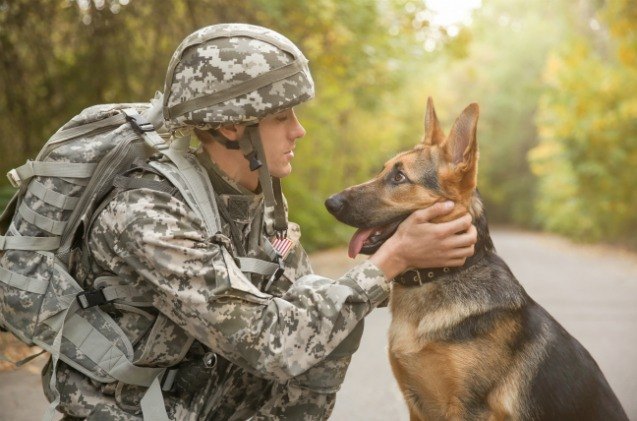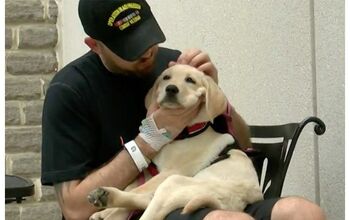New Report Shows Army’s Failure In Taking Care Of Heroic Canines

Animal advocates are up in arms as a new report from the Department of Defense claims that the United States Army mishandled adoptions of bomb-sniffing dogs that were key in service during Operation Enduring Freedom.
The report claims that from February of 2011 to February 2014, over 200 dogs served in Afghanistan as part of a Tactical Explosive Detector Dog program as they looked to prevent injuries from improvised explosive devices (IEDs).
Related: Heroic Military Dogs Saved From Euthanasia After Successful Online Campaign
The program came to a brusque halt in 2014, and the Army told the program managers that the canine service members needed to be transitioned out of the program in less than two months. The report said that in the haste to transfer these dogs from the Tactical Explosive Detector Dog program to other law-enforcement agencies or even to their civilian handlers, the Army did not properly care for veterinary necessities for some of the recipients.
More, the report claims the Army often went against the suggestions and recommendations of veterinarians at Fort Bragg, where the dogs were screened to see whether they were medically and emotionally adoptable. One case cited in the report detailed the Army allowing a family with children to adopt a dog that had maybe undergone biting training. Additionally, the Army allowed a dog who vets had diagnosed with ‘canine PTSD’ to live with a family that also had children. In that situation, the dog was taken to the local sheriff’s department nine days after adoption.
Thirteen of the dogs in the report were adopted by a private company but were abandoned for more than a year at a Virginia kennel. Thankfully, two non-profit dog rescue groups helped reunite the dogs with their former military handlers.
Additional violations on the Army’s part included not having the dogs neutered before they were adopted, and they failed to accurately track the dogs after they left the program as they should. The Department of Defense also may have lied to Congress last year when they reported that they’d found placements for 229 dogs in the program when it turns out the Army actually placed 232, and not reporting the circumstances for the three unreported dogs.
Related: Military Working Dog Receives Hero’s Send-Off As He’s Laid To Rest
In 2016, soldiers looking to be reunited with their dogs led efforts to have the Pentagon’s inspector general to investigate the program and the mishandling of the heroic dogs. The Army says it is now working to comply with the recommendations of the inspector general, and to be more careful with adoptions and vetting for dogs in any programs to come.
As a dog lover and a military spouse for over 21 years? I say too little, too late. Those dogs deserved better than to just be forgotten and I hope this investigation keeps more organizations on their toes.

More by Lori Ennis























